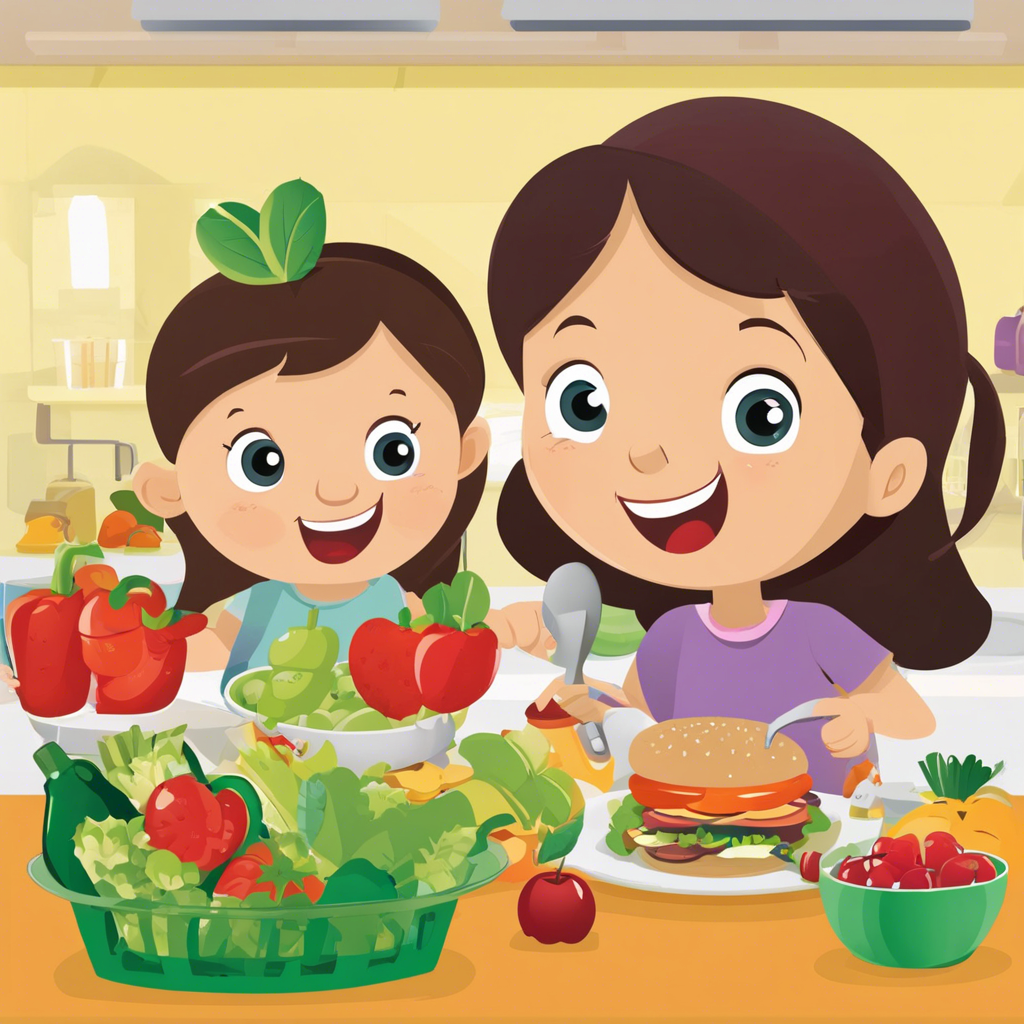As a parent, one of your greatest responsibilities is ensuring your child’s health and well-being. This includes fostering healthy eating habits that will benefit them throughout their lives. But how can you make nutrition fun and engaging for your little ones? First and foremost, involve your kids in the kitchen! Cooking and baking together can be a delightful adventure that sparks their curiosity about ingredients and recipes. Start with simple, kid-friendly recipes that allow for creativity and exploration. For example, homemade pizzas can be a fun canvas for experimenting with different vegetable toppings. Or, try making fruit smoothies together and let your kids blend their favorite combinations. Not only will they be excited to taste their creations, but they’ll also be more open to trying new flavors and ingredients.
Another strategy is to present healthy foods in imaginative ways. For instance, instead of serving plain carrot sticks, cut them into fun shapes or create playful arrangements on the plate. You can also engage their sense of play by creating food art, such as turning a plate of vegetables into a colorful garden scene. Make mealtimes a game by creating food-related challenges and rewards. For example, you could have a “Try Something New” night once a week, where everyone samples a new food and earns a small prize for their bravery. Or, create a sticker chart that rewards your child for trying a certain number of new foods or reaching a specific goal, like eating a serving of vegetables every day for a week.
It’s essential to involve your children in grocery shopping as well. Take them to the produce section and encourage them to touch, smell, and select new fruits and vegetables. Talk about the different colors, textures, and flavors, and let them choose one new item to try each week. By doing so, you’re empowering them to make healthy choices and fostering their interest in nutritious foods. Don’t forget to set a good example yourself by modeling the behaviors you want to see in your children. If they see you enjoying salads, they’ll be more inclined to give them a try. Talk about your own experiences with trying new foods and how you’ve learned to like things you didn’t initially care for.
Additionally, grow food with your children. Whether in a small garden plot or a few pots on the windowsill, planting and caring for their vegetables, fruits, or herbs can be a rewarding experience for kids. They’ll feel a sense of pride and ownership when they harvest and eat their produce. This also teaches them about the hard work and dedication that goes into growing food, fostering a deeper appreciation for their meals. Involve your kids in packing their school lunches. Giving them some choices within set parameters will make them feel involved and ensure they’re more likely to eat what’s in their lunchbox. For example, offer a choice between an apple or a banana, or let them decide if they want their sandwich cut into triangles or rectangles.
It’s essential to remember that every child is different, and what works for one may not work for another. Some children are naturally more adventurous eaters, while others may be more hesitant. Respect your child’s preferences and comfort level, and don’t force them to eat something they genuinely dislike. Instead, keep offering a variety of healthy options and exposing them to new flavors gradually. Over time, with patience and persistence, you can help your child develop a positive and healthy relationship with food. Making mealtimes a social affair is another excellent way to engage your child. Invite their friends over for a healthy snack-making session or host a picnic where everyone brings a nutritious dish to share.
Positive language is essential when talking about healthy eating with your kids. Instead of focusing on what they shouldn’t eat, emphasize the benefits of what they should. For example, say, “Eating carrots will help you see in the dark like a superhero!” rather than simply telling them not to eat sweets. This encourages a positive mindset around food and empowers them to make healthy choices. Finally, ensure you’re not solely focusing on the nutritional value of food but also on the pleasure it brings. Eating should be enjoyable, and creating positive food associations will benefit your child in the long run. So, go ahead and indulge in that piece of cake together—just remember to emphasize the importance of moderation and balance!
By implementing these strategies, you can make healthy eating a fun and enjoyable part of your child’s life. Fostering a positive relationship with food from an early age will set them up for a lifetime of nutritious choices. So, get creative in the kitchen, experiment with new foods, and watch your little ones flourish as they discover the joys of healthy eating! Remember, it’s not just about the food on their plate but also the fun and love you bring to the table. Happy and healthy eating to you and your family!

